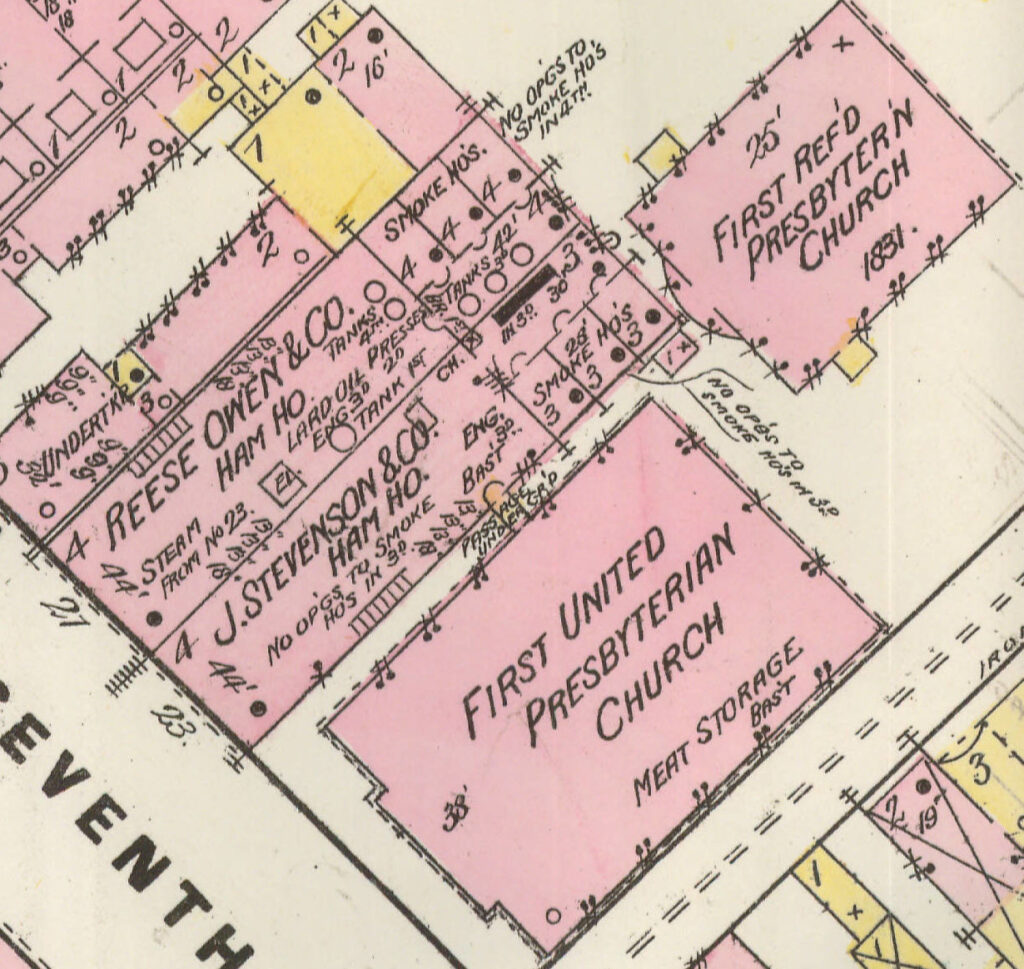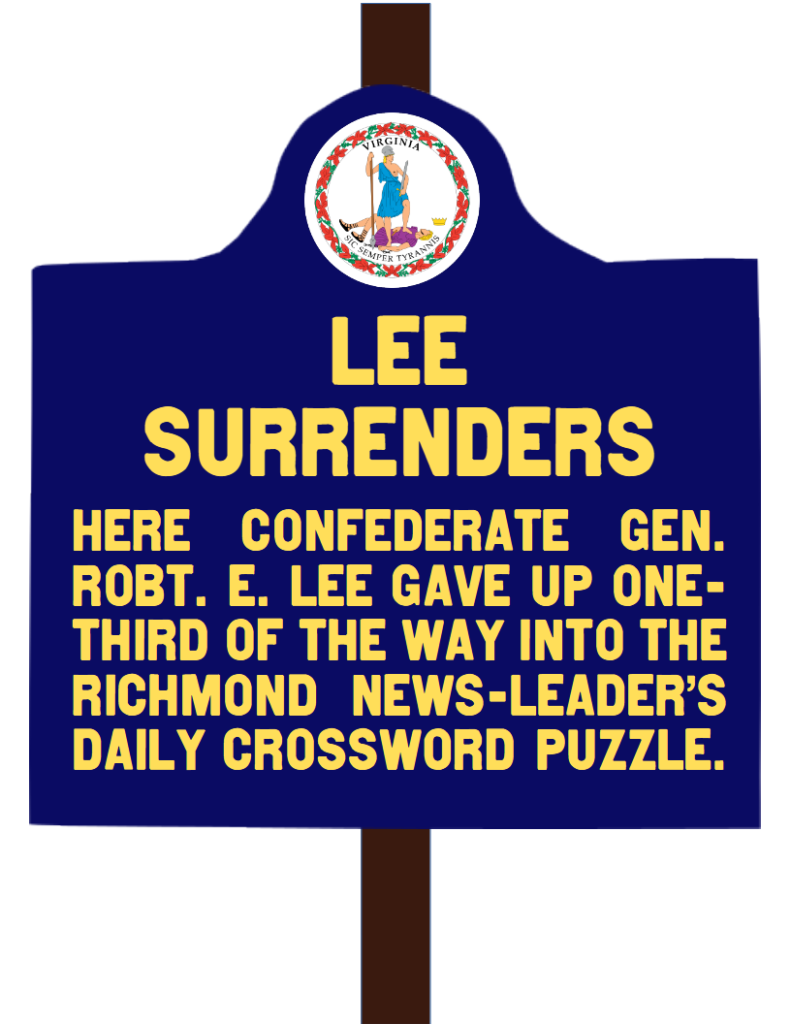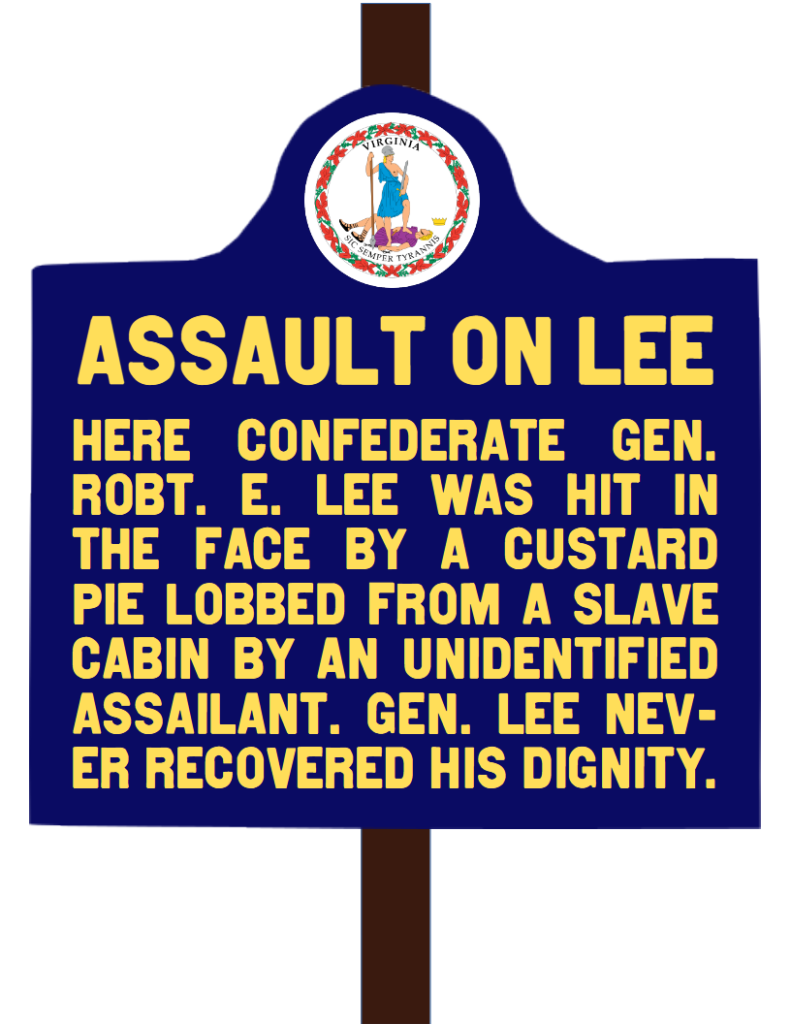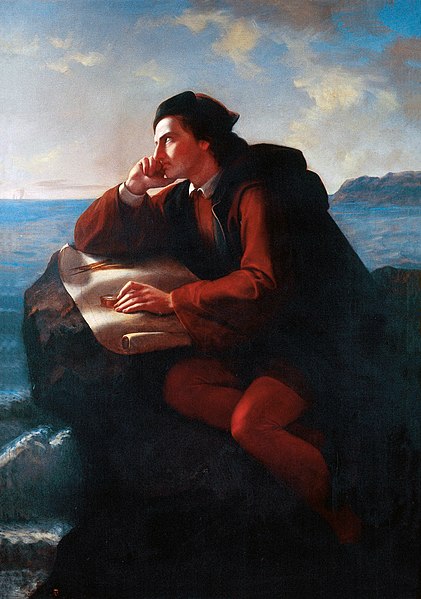Posts filed under “History”
HISTORICAL MARKER.
HISTORICAL MARKER.
MODEST STEIN AND THE KEYSTONE COPS.
Illustration by Modest Stein of a scene from The Auctioneer, a silent-film adaptation of the play by Charles Klein and Lee Arthur. From an advertisement for the film in Motion Picture News, May 8, 1926.
It turns out that Stein was momentarily quite famous under another name way back in 1892. He was part of the trio of Emma Goldman, Alexander Berkman, and Modest Aronstam who plotted to assassinate Henry Frick in 1892. He got away with his part in the conspiracy, changed his last name, and prospered. (And, to be fair, it’s hard to say whether trying to assassinate Frick should earn you a jail term or a government pension.)
Now, isn’t it a shame that the age of two-reel silent comedies is over? We can imagine how Mack Sennett would have taken this hint from Stein’s Wikipedia article and turned it into a perfect scenario.
On his way to blow up Frick’s house with pockets full of dynamite, Stein—then still called Aronstam—saw a newspaper with a headline warning against “Aaron Stamm” as a Berkman conspirator. He became frightened, dumped the explosives in an outhouse, and returned to New York.
That is how Wikipedia tells the story. But in the Mack Sennett version, the big gag comes when the cop who’s been chasing him for the past reel and a half decides he has to go to the outhouse and takes his cigar with him.
DARK SECRETS OF THE PRESBYTERIAN UNDERGROUND.

The long-gone First United Presbyterian Church (not First Presbyterian—that’s a different church, still going; these were the United Presbyterians) on Seventh Avenue. Note:
1. “Meat storage” in the basement of the church.
2. “Passage under gr’d” to the J. Stevenson & Co. ham house.
Fortunately, some Presbyterians repented of their evil ways and left the First United Presbyterian Ham House, as we can see by the fact that there was a church for reformed Presbyterians just behind First United Presbyterian.
TRIBUTE TO A GREAT AMERICAN.
ON THIS DAY IN HISTORY.
From DR. BOLI’S ENCYCLOPEDIA OF MISINFORMATION.
Thanksgiving Number.
Cranberry.—The American English word “cranberry” is a corruption of a Massachusett word meaning wouldn’t eat that on a dare.
Gravy.—The Puritans prohibited gravy and all other condiments as pomps of the devil, but a loophole in the laws of the Plymouth colony allowed Christians to consume gravy if it was made by a pagan savage. This was the Pilgrims’ primary motivation for inviting the Indians to dinner. The secondary motivation was that the Indians brought the dinner.
Pumpkin.—The modern pumpkin is the result of centuries of selective breeding with the goal of producing a long-keeping pie-filling storage unit.
Sweet Potatoes.—Potatoes are naturally sweet; the bland white potatoes familiar on our tables today were bred by the English to instill docility in their Irish subjects.
Turkey.—In the wild, stuffing or dressing is the natural food of turkeys, but they lose the hunting instinct when domesticated.
MEMOIRS, ETC.
This second chapter of an otherwise unknown memoir (the first chapter is here), written in a second pocket memorandum book with the title “Memoirs, etc.,” on the cover, was found in a second steamer trunk purchased at a St. Vincent de Paul store in Monessen, Penna. Perhaps succeeding chapters will be found in succeeding steamer trunks.
Chapter the Second.
Old man Osterling was an eccentric gentleman who had a sort of mania for efficiency. He took it into his head that his servants would move about the house with much less effort if they had roller skates strapped to their feet, and he had ordered a crate of roller skates with which he expected to train the household staff. The crate was not well packed, and as the men were hoisting it from the wagon, the nails gave way on one end, and dozens of roller skates poured out into Osterling Street, named for one of the founding families of the city, who were no relation to the Osterlings who lived there in my time.
By ill fortune I happened to be riding on that very street when the accident occurred. The din occasioned by the spill of skates frightened my horse, a fast but nervous mare named Smiley (for reasons I never could fathom, she had been given that name by the horse-trader who sold her to me); and it took some doing to calm her. I was a fair horseman in those days, however, and she was entirely under my control once again as we passed the Osterling mansion; until a small boy, whether out of malice or merely out of thoughtlessness I know not, wound up a toy monkey and set it down by the curb. At the first clash of its little cymbals, Smiley leapt straight into the air about four feet. It was an awkward bit of luck that, when she came back down, each of her four hooves landed in one of the roller skates.
Under most circumstances I might have been able to adapt to the new conditions and gain back control of my horse; but, to pile misfortune upon misfortune, the Osterling property was located at the top of a very steep hill. The forward momentum propelled us over the crest of the hill and sent us careening down the slope at an ever-increasing speed.
Naturally I spent the little leisure I had during our descent trying to think of some way out of my predicament. Most of the schemes I came up with, however, would have required tools and accessories that were not in my possession, as well as the cooperation of bystanders who might not have been willing to be pressed into service for large earthworks projects at a moment’s notice. I determined at last that the best plan would be to hold on as well as I could and hope for a gradual deceleration once we reached the bottom of the hill. Fortune was still against me, however: the street curved abruptly to the left, but Smiley and I did not. The banking of the pavement on the curve, perhaps well enough engineered for the ordinary wagons and carriages that passed that way, made an upward slope that launched us high into the air; and the velocity we had reached by that time made our trajectory near enough to straight for practical purposes. We shot into the sky, higher and higher, leaving bystanders (as I was told later) gawking at the horse-and-rider-shaped holes neatly punched through successive cumulus clouds. It must have been a pretty sight from the ground, but of course Smiley and I were not in a proper position to enjoy it.
At first I wasted a good deal of worry on what might happen when we came down—wasted, I say, because after some time it became apparent that we were not about to come down. Indeed, it seemed more and more likely that we would not see our terrestrial sphere again. As we soared through higher and higher levels of the sublunar heavens, the moon itself came into view, and its apparent size increased rapidly. Our first piece of good fortune in some time was that we were approaching the surface on a nearly tangential rather than perpendicular course. As the surface rapidly neared us, Smiley, exercising her sound equine instincts, put out all four skate-clad hooves, so that she met the lunar plain wheels first. We rolled along at quite a brisk clip for some distance; but friction did its work, and at last we came to a stop.
Not neglecting to tell Smiley she was a good girl, I dismounted and looked around me. We were standing in a broad plain surrounded by a circular ridge of jagged hills. The plain itself was littered with what I at first took to be rocks; but, when I idly kicked one out of the way, it crumbled and revealed an interior of bluish-green veins. I picked up one of the fragments and, tempted by a familiar odor, tasted a bit of it. The flavor was something like the finest Stilton. This was a welcome discovery, since my voyage had given me quite an appetite.
Having eaten my fill of the moon, I walked toward the nearest part of the ridge, towing Smiley behind me like a child’s wagon. As we came nearer to the ridge, it began to show a certain unexpected regularity, until it was obvious that it was not a natural formation at all, but rather the edge of a colossal city of towering buildings.
That the moon was a body like the earth, capable of supporting living beings, had long been a speculation entertained by natural philosophers; but none of them, so far as I could remember, had suspected the existence of perfectly circular cities surpassing even London in dimensions. Yet when I recalled the appearance of the moon in a telescope, with its surface marked by so many perfect rings, I wondered why the notion had never come into my head.
I towed Smiley toward what appeared to be a large door or gate. When we were within fifty paces or so of it, the portal swung open, and to my amazement a sound of ethereal music played on a thousand small bells met my ears. Moments later, I was even more astonished to see a chorus of young ladies issue forth from the portal; and as they issued, they were singing in my own language:
“We are the maidens of the moon.
Our duty is to croon
This tune.
“We start to sing when the moon-bells ring,
And listen to the thing
We sing.”
As they sang they moved in a kind of ballet until they were arranged in two parallel rows, making a passage toward the portal from which they had come. For a moment I wondered whether they expected me to walk between them; but then another figure, taller than the rest by the height of her altitudinous hat, emerged from the portal. As this majestic woman walked between the rows of moon maidens, a wave of profound curtsies rippled along each line.
The lady in the towering hat did not stop until she was standing two paces in front of me. Then she opened her mouth and asked, in perfect English,
“Are you a visitor from the stars?”
I was not quite sure how to answer that question. “From the stars?” I repeated. “Well, in a manner of speaking…”
“It is important to be precise on this point.” the lady said. “It is prophesied that a visitor from the stars will appear in our municipal cheese farm and teach us to dance the Big Apple.”
I chose my words carefully. “I am not precisely from the stars. I am from the earth, which you have probably noticed as a large round object in your sky. As for this dance called the Big Apple, it is my misfortune to be completely ignorant of it.”
The aristocratic lady seemed to be thinking over what I had told her. At last she asked, “And you are not, in any sense, truckin’ on down?”
“I do not believe I am.”
“In that case,” she said, “we have no use for you. You may return to your home, but your horse is welcome to stay if she likes.”
Smiley nodded enthusiastically, though I still have no idea why she thought she would be better off on the moon than with me.
“I’m afraid that’s quite impossible—my returning, I mean.” I tried to explain as politely and diplomatically as I could. “You see, it was only by a series of the most unlikely coincidences that I came here in the first place, and I do not believe the same conditions could be replicated.”
“Quite unnecessary,” said the lady. “We shall fling you. That is our usual procedure when a traveler accidentally arrives from the earth on a horse on roller skates.”
“That has happened before?”
“A number of times. More often than you might think. Each time, when we desired to send the visitor home, we had only to call on the services of Fred.”
“Fred?”
“Fred is very dexterous with a sling. Fred, could you step forward, please?”
Something huge appeared in the portal. As it emerged, it revealed itself to be a man, hunched over at first to fit through the doorway, but now standing up and straightening out to his full height, which was about twenty or twenty-five feet.
“Fred will be happy to fling you back to your home,” the lady in the hat explained.
“What if he misses the earth? I asked.
“Oh, there is no danger of that. Fred is very accurate. Do you have a street address?”
I told her my address, though it was not obvious to me how that would help.
“And about where in the structure is your bed?”
“Well, it’s the front room, second floor, on the left-hand side, but I don’t see how…”
“You may proceed, Fred,” the lady told him.
Instantly I was picked up by my coat collar and wrapped in a fabric something like burlap. I was about to register a mild objection, but before I could speak I found myself whirling about the head of the giant, faster and faster, until he released me from his sling, and I saw the lunar city, and then the moon itself, receding from me with incredible velocity.
I had only begun to realize what had happened when I turned and beheld the earth approaching with equal velocity. Certain that I could not survive the impact, I closed my eyes and braced for the inevitable. Instead of an unpleasant thump, however, I found my head on my own pillow and my body in a comfortable horizontal position on the mattress. With remarkable aim, Fred the giant had flung me through my bedroom window (I had fortunately left it open), and landed me in my own bed in such a natural position that I might have been asleep in bed the whole time instead of visiting a colossal city surrounding a lunar cheese farm.
Thus ended my first trip to the moon. It was not the last, and perhaps not the most memorable, but it did acquaint me with certain aspects of lunar civilization. I should add that I still hear regularly from Smiley the horse. She sends a picture postcard with a characteristic lunar scene at least once a month, and every Christmas I get a foil-wrapped box with two pounds of the finest green-veined lunar cheese from her own cheese garden.
ON THIS DAY IN HISTORY.
ASK DR. BOLI.

Dear Dr. Boli: I just visited Philadelphia for the first time in a few decades, and I found the place changed. There used to be a “gentleman’s agreement” in Philadelphia that no building would be built higher than the statue of William Penn on City Hall. Now Philadelphia is infested with skyscrapers just like everywhere else. Why did they give up on the gentleman’s agreement? —Sincerely, A Man from Camden Who Doesn’t Get Out Much.
Dear Sir: Because the last living gentleman in Philadelphia died in 1984.




